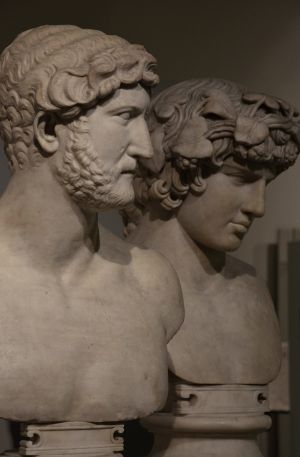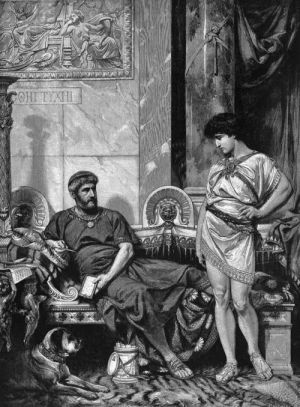(Boylove Documentary Sourcebook) - The Great Honors Bestowed by Emperor Hadrian upon the Death of Antinous, His Young Male Beloved, as Stated in the 'Roman History' by Dio Cassius

From Roman History (Ancient Greek: Ῥωμαϊκὴ Ἱστορία Romaike Istoria, Latin: Historia Romana [c. 230 AD]), Book 69, Chapter 11, by Dio Cassius, translated by Earnest Cary and Herbert B. Foster, Volume 8, Loeb Classical Library (London: William Heinemann; Cambridge, Massachusetts: Harvard University Press, 1925). Footnotes omitted.
Note 1: Antinous or Antinoös (c. 111–130 AD), a Bithynian Greek youth born in Claudiopolis (present day Bolu, Turkey), was probably introduced to the Roman emperor Hadrian in 123 AD (aged around 12), before being taken to Italy for a higher education. He had become the favourite of Hadrian by 128 AD (aged around 17), when he was taken on a tour of the Roman Empire as part of Hadrian's personal retinue. In October 130 AD (aged around 19), as they were part of a flotilla going along the Nile, Antinous died amid mysterious circumstances. Following his death, Hadrian deified Antinous and founded an organised cult devoted to his worship that spread throughout the Empire.[1]
Note 2: According to Chapter 4 of the biography of Hadrian included in the Historia Augusta (4th Century AD), a dubious but still relevant collection of texts, there were generally believed rumors that he had courted and engaged in frequent sexual intercourse with the delicati ("darlings", favorite young slaves) of his cousin and predecessor, emperor Trajan, whose pederastic proclivities are mentioned in Book 68, Chapter 7, of the Roman History by Dio.[2][3]
In Egypt also he rebuilt the city named henceforth for Antinous. Antinous was from Bithynium, a city of Bithynia, which we also call Claudiopolis; he had been a favorite of the emperor and had died in Egypt, either by falling into the Nile, as Hadrian writes, or, as the truth is, by being offered in sacrifice. For Hadrian, as I have stated, was always very curious and employed divinations and incantations of all kinds. Accordingly, he honored Antinous, either because of his love for him or because the youth had voluntarily undertaken to die (it being necessary that a life should be surrendered freely for the accomplishment of the ends Hadrian had in view), by building a city on the spot where he had suffered this fate and naming it after him; and he also set up statues, or rather sacred images, of him, practically all over the world. Finally, he declared that he had seen a star which he took to be that of Antinous, and gladly lent an ear to the fictitious tales woven by his associates to the effect that the star had really come into being from the spirit of Antinous and had then appeared for the first time. On this account, then, he became the object of some ridicule, and also because at the death of his sister Paulina he had not immediately paid her any honor . . .

References
See also
- Adult friend
- Catamite
- Ephebophilia
- Erastes
- Eromenos
- Greek love
- Historical boylove relationships in ancient Greece
- Historical boylove relationships in ancient Rome
- Pederasty in ancient Greece
- Pedophilia
- Philosophy of ancient Greek pederasty
- Young friend